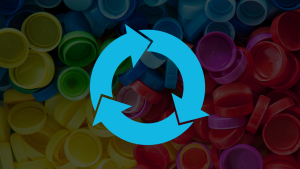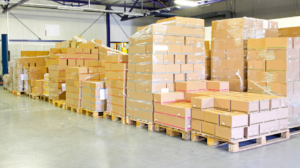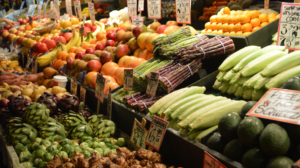The Kings of Recycling Are Fighting Over Scraps
Where does it all go? The plastic bag for your supermarket run, the banh mi sandwich wrapper you strip away for lunch, the endless packaging shipped via every Amazon order, the water bottle you crush post-workout — what happens when you throw it away? And if you haul it out to your green recycling bin, does it even get recycled?
Common sense screams yes, but in the wake of changing laws and shifting global markets, the reality is far dirtier.
At a time when we’re able to irrigate deserts, create man-made glaciers, communicate constantly across time zones and borders — even if it destroys our mood and memory — one of the biggest problems we face starts at home. And no, it’s not politics or climate, but in many ways it’s just as important.
We Americans create about seven pounds of trash per person a day. As a nation, that’s more than 262 million tons of waste a year, according to the EPA. Despite our best efforts, more than half of that waste is sent to landfills, according to the Environmental Protection Agency.
The plastic that ruled our lives was a commodity yielding huge returns when it came to recycling. The market shift began tilting once China decided to stop taking our junk.
In 1960, the United States recycled 5.6 million tons of trash — a number that grew to nearly 70 million tons by 2015. While numbers have trended upward for decades, even taking into account growth in overall trash production and population, there’s been a staggering 184% increase in the amount of trash produced today versus 1960. No matter how much you fill your recycle bin, the system is crashing. The “why” is the dark corollary to globalism. Cheap products beget cheap products beget more and more packaging.
For years, the plastic that ruled our lives was a commodity yielding huge returns when it came to recycling. That profitability is based on global demand, and even before the trade war began, the market shift began tilting once China decided to stop taking our junk.
In the shadow of an interconnected world
Last year, China decided to scrap what once made fiscal dollars and sense. After years of hoovering up our junk, it stopped being profitable to sift, clean, and recycle plastics contaminated with paper, food waste, and other nonreusable materials. In 2017, China began to cut back on plastic imports. In early 2018, it banned all imports.
China’s National Sword policy meant the Middle Kingdom went from buying 60% of the plastic waste exported by the G7 during the first half of 2017 to taking less than 10% a year later. This monumental move signaled the end of the recycling market for the rest of the developed world. To give a sense of this impact domestically, the United States exported 30% less plastic scrap in the first half of 2018 than in 2017. Today, those numbers are even grimmer. The equivalent of 250 Olympic-sized swimming pools — about 19,000 shipping containers’ worth of plastic once exported abroad — is now piling up each month.
As a result of this ever-growing pile, U.S. cities are now sending their plastic to landfills in record numbers. In my own Los Angeles County, Coby Skye, assistant deputy director of environmental programs for L.A. County’s Department of Public Works, admitted to the Guardian recently that cities throughout the United States are reflecting this global change by dumping everything you and I throw into a recycling bin into a landfill.
The coming new world order
With China saying no, new scrap kings have been crowned in Thailand, Malaysia, and Vietnam, since many Southeast Asian nations have scant environmental restrictions and are teeming with illegal processing plants and pollution. In Thailand alone, there are at least 60,000 Thai and foreign-registered factories that import waste products, many of them toxic. Greenpeace says Thailand’s plastic waste imports grew from 70,000 tons in 2016 to nearly half a million tons in 2018. In that two-year span in Southeast Asia, plastic waste imports rose over 171%, which translates to about 423,000 20-foot shipping containers.
There’s big money driving these moves. Between January and November of last year, Chinese imports of copper scrap from Thailand shot up nearly 95% from 2017, a 355% leap from the previous year; in the Philippines, scrap copper shipments rose over 520%. But even that shift could now be threatened.
A new legally binding and globally reaching hard stop called the Basel Amendment seeks to protect the developing world from all of our junk. The treaty, which was ratified earlier this year by 187 nations — though not the United States — amounts to a de facto trade restriction where rich nations could no longer dump their trash in 36 developing ones. In many ways this is an idealistic approach to protecting the third world, but doing so poses a huge unanswered question: If not there, then where?
Why hasn’t the United States backed the amendment? The EPA says it hinders recycling. In a July letter to the Basel Action Network, the nongovernmental organization that championed the change, EPA Administrator Andrew Wheeler waves a stick, warning that these regulations will promote more waste being sent to landfills by the first world.
The Basel Action Network reckons forcing world governments into an even more untenable solution will force their hand and, thereby, actionable change. To that end, it advocates for legislation and market incentives to reduce plastics use, which Jim Pickett, the organization’s executive director, calls the only solution to this problem.



